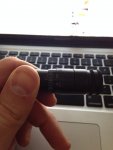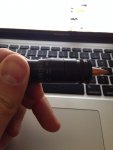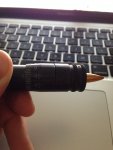I just finished assembling everything I need to start reloading and am working on figuring out shoulder bump/headspace measuring. The rifle is a 700 5R .308 and I've been shooting FGMM 168 and 175 exclusively. I've been using the RCBS precision mic to compare fired vs unfired FGMM cases and have questions. Basically all my fired brass is measuring at 2.5 thousandths below 0 on the gauge. The unfired 168gr measure 3.5 thousandths under 0 and the unfired 175gr measure 6 thousandths below 0. I measured a good 10+ cases of each and they are all very similar. My rifle shoots the 168s VERY well, and noticeably better than the 175s.
So how far should I bump the shoulder on my brass to reload? I've read that I shouldn't bump the fired cases all the way back to factory unfired length, but the 168 unfired length is only 1 thousandth smaller. Any advice?
Fired brass:

168gr unfired:

175gr unfired:

So how far should I bump the shoulder on my brass to reload? I've read that I shouldn't bump the fired cases all the way back to factory unfired length, but the 168 unfired length is only 1 thousandth smaller. Any advice?
Fired brass:

168gr unfired:

175gr unfired:










